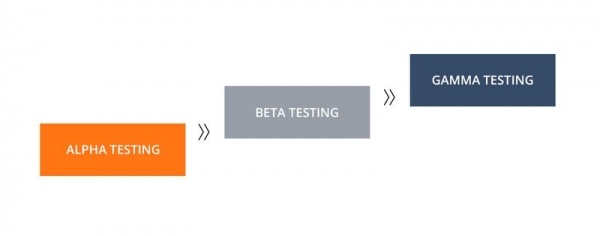The Ultimate Guide To Static vs Dynamic Testing: Business Considerations & More
If you’re wondering what static vs. dynamic testing is, the difference lies in how often your code will be executed to find bugs. Static testing only runs your code once, while dynamic testing executes it multiple times–which means more chances for errors to surface! Check out this infographic to see which type of test would work best for your project. Again, the difference between static and dynamic testing lies in how often your code is executed to find bugs.
What is static testing?
Static testing is also known as syntax, linting, code checking, or “Code Review.” Static testing doesn’t execute your code. Instead, it scans your code in search of common issues that can cause problems later on when you run your application.
What is dynamic testing?
Dynamic testing is also known as functional testing, black-box testing, or by the name “QA.” Dynamic testing executes your code so it can find issues that are caused by incorrect behavior of your application.
What is unit testing?
Let’s understand Unit testing first before we head on to static and dynamic testing.
Unit testing tests small components of the whole system at the smallest level of detail. This testing does not require any dependencies to be mocked/simulated, making it perfect for testing code that is difficult to test in other ways. Furthermore, unit testing focuses on the programmer’s perspective by checking if individual units of source code are correct.
There is a strong relation between unit testing, static code analysis and dynamic test. Unit tests are used to check the programming logic in each method of an entity. At the same time, static checks guarantee that all variables have been initialized before running any operations on them.
On the other hand, dynamic checks are performed while creating test data to ensure that all expected cases have been covered. All of these techniques improve code quality, increase security and minimize failure risks.
Where should I run my static testing?
Static tests are usually executed before you integrate all your code into a testing environment or before you release your app/
Why use static testing?
Using static testing before you integrate your code into the testing environment makes it easier to spot errors. It also gives you more confidence that things are working as expected.
What is integration testing?
Integration tests are a type of dynamic test. It tests the interaction between various components or units. For example, each unit may be individually tested by unit testing, while integration testing makes sure all these units work together as expected.
Why use dynamic testing?
Dynamic tests allow you to see how your app functions in an environment similar to your users. It provides real data and executes the code to find bugs that may not be revealed by unit testing.
Which one should I choose?
It depends on what you want to test and where you want to try it:
Unit testing is preferred when your unit tests touch a lot of different components and require setting up a large number of test doubles. Static testing is chosen before you release your application for checking syntax errors. Integration testing is the best choice to simulate how various components work together in a real-life environment.
What is the difference between static and dynamic testing?
Static testing does not execute your code, while dynamic testing executes it multiple times. The more times you run your code, the more chances for errors to surface. You’d choose a static test if you’re only interested in checking for syntax errors, while a dynamic test would be a better choice when you want to simulate how various components work together.
Why should I use unit testing?
Unit testing focuses on the programmer’s perspective by checking if individual units of source code are correct.
Where should I run my dynamic testing?
Dynamic tests can be executed before you integrate all your code into a testing environment or after. It depends on what you want to test and what you want to check for:
If your goal is to find issues that are not revealed by unit testing, you should run dynamic tests. When all units under test have been integrated into a common environment. If, however, you’re only interested in checking how well various components work together. Then you can safely ignore unit testing and run dynamic tests before integrating your code.
How do I run a static test?
To check your syntax and structure without running the code, you can use:
- Makefile command-line utility (it is part of most Unixes).
- IDE support (most modern IDEs have it).
- An external tool.
Why should I care about integration testing?
Integration tests are a type of dynamic test. It tests the interaction between various components or units. For example, each unit may be individually tested by unit testing, while integration testing makes sure all these units work together as expected.
How do I run a dynamic test?
Dynamic tests execute your code multiple times to increase the chances for errors to surface. You can use:
- Makefile command-line utility (it is part of most Unixes).
- IDE support (most modern IDEs have it).
- An external tool.
Final thoughts
There are many considerations to consider before you decide which type of testing is best for your business. It’s not just about how much it costs but also the time investment to get accurate data that will lead to better marketing decisions and improved conversion rates. We hope this guide has given you some ideas on what factors need consideration when deciding between static vs dynamic testing; if you have any questions, feel free to reach out!

















